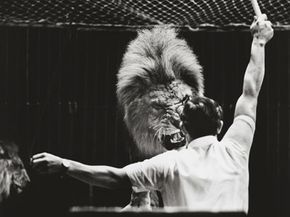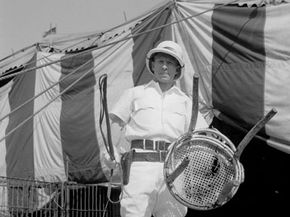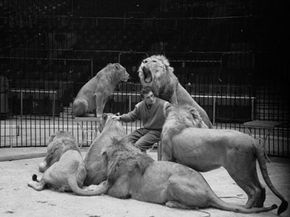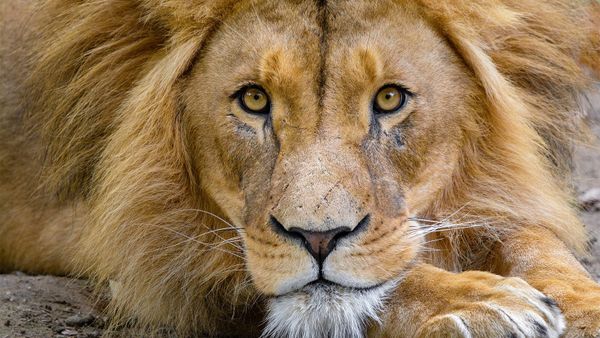If nothing else,liontaming makes for a great metaphor. Teachers tame lions when they discipline a group of rowdy students. Business people tame lions when they assuage an angry customer or steady a snarling boss. Parents tame lions when they try to talk reason to their misbehaving teens. Taming a lion means approaching something intimidating and powerful and using your wits and learned strategies to disarm the beast.
但是狮子驯服也有其字面意思)tame, or rather train, the giant feline. (Nowadays, people in the field wince at the term "tame" and prefer the word "train.") When we hear the words lion taming, most of us imagine a dashingmanin a top hat and tails, twirling a chair and cracking a whip at growling big cats. Indeed, that's what the lion taming acts of the circus have generally looked like, and they've been taking place for over 200 years.
Advertisement
The first circus came to the United States in 1783. At that time, the most popular animal act was the equestrian display. Most circuses had a traveling menagerie of wild animals, but they were primarily for display. They were kept in small cages, and spectators paid to take a look at the animals up close.
But once the first lion tamer fearlessly stepped into the ring with a big cat, lion taming became one of the most popular acts in the circus. Tamers both male and female, dressed in fancy costumes, put on daring, theatrical shows displaying the mastery of man over beast. The methods and acts evolved over the years as our perception of animal treatment also evolved.
A lion is a wild animal with 3-inch (7.5-centimeter) claws and a mouth that opens wider than your head is long -- 1 foot (30 centimeters). Its jaws can crush a bull's spine. Makes you wonder why anyone would even attempt to tame this beast. But they do. How?
Advertisement









